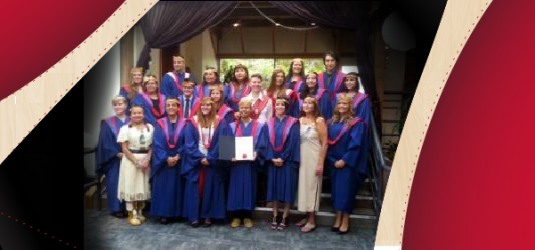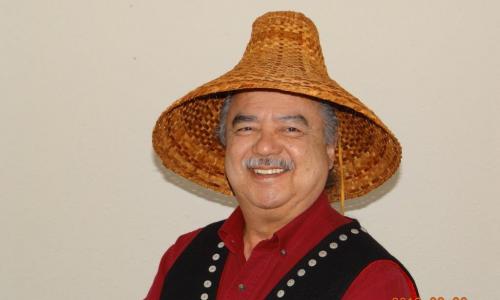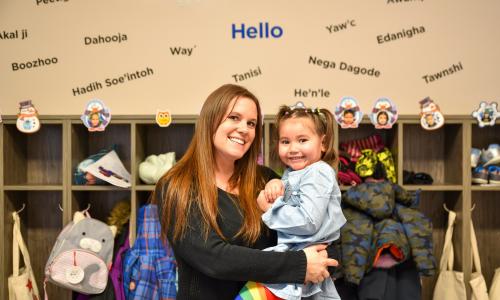
By focusing on technology as a source of empowerment for Indigenous women, as well as a tool for the maintenance of their languages, it is clear that the possibilities are endless. Numerous models throughout the world have taken advantage of ICTs (Information Communication Technologies) in order to accomplish this. By evaluating existing models and building upon those ideas, Indigenous women have more opportunities than ever before to reclaim their inherent roles within their communities. Close examination of such technologies have the ability to facilitate a rebirthing of Indigenous language keepers, provided Indigenous women work together to see that it is accomplished in such a way that nurtures Indigenous values and cultures.
It is important to stress the importance of language technologies facilitating Indigenous pedagogies, because it is the current structure of the western education system that has, in many ways, prevented the revitalization of Indigenous languages in the first place.
In order for these technologies to prevent the continued loss of language and work toward revitalization, they must reflect Indigenous ways of learning or else they will simply become another tool of colonization, and any benefit will be lost within the maelstrom of Eurocentric ideals which has proven to be a barrier for the Indigenous student. This is precisely why it is imperative that Indigenous women place themselves at the forefront of language revitalization. Because they are the keepers of culture, the keepers of tradition, they are best suited to collaborate in the creation of effective language technologies.
For Indigenous communities and scholars, the long-standing problem of superficial incorporation of culture into curriculum is a critical and reoccurring pattern and central challenge to overcome. Efforts to remedy “failure” of Native American students in schooling through cultural-based education and teacher eduction have continually run into binary walls that represent the dichotomized thinking and structural racism. (Hermes et al., 2012, p. 382).
A possible cause of such structural racism is likely that white folks tell brown folks how to teach brown folks, which has been proven time and time again to have more harmful consequences than positive outcomes. A plausible solution to this issue is providing resources to Indigenous communities in general, and Indigenous women specifically, so that they can pass on their knowledge of traditions and language in a way that reflects nationhood.
An example of how this process might begin to take place is by examining how the Ojibwe language revitalization efforts have turned language into content. Several initial questions they asked themselves are helpful in starting the process of language revitalization through ICTs that enable a language to be socially situated for its continued use and maintenance.
Their questions were: “how can we make and produce meaning together through the Ojibwe language? And how might this be expressed in learning material? Can we replicate or support conversations that move back and forth in context and the spontaneous meaning making that is everyday oral language in use” (Hermes et al., 2012, p. 392)?
Seeking informed answers to these question will ensure that content created for the revitalization of a specific language will produce lasting results. They are not simply attempting to design language content, but more so attempting to design language content that produces meaning for the learner. This part of the design process ensures the inclusion of Indigenous pedagogies which facilitates long term success. For Indigenous women involved in these processes, transmitting their knowledge into content will naturally give the content meaning as it will be transmitted in such a way that reflects the way that that knowledge was transmitted to them. It then becomes a matter of creating content that mirrors Indigenous women’s ways of passing on that knowledge.
A case study featuring “The Tagish First Voices Project” shows how the simple process of transmitting language naturally evolves into working content that can then be used for the benefit of the community at large. The project seeks to save what was deemed the most endangered Yukon First Nation language with only one native speaker of the language left. Below is an excerpt from the case study.
The project team consists of elders and young adults from the community, who work together to record Tagish words and sentences directly into a computer and add the files to their language archive. The First Nation took the initiative to access outside expertise in order to acquire the most suitable equipment for work on the First Voices Web site and, in collaboration with the First People’s Cultural Foundation, also supported technical training for its members, ensuring that the local team is able to manage the language database. Written text is placed on the Web site with language recording so that users are able to read the native language while they listen to it […] This system is further supported by a Unicode font and keyboard that was developed for use with Yukon languages by the FPCF, bringing control over the representation of written Tagish literally into the hands of the First Nation. (Hennessy & Moore, 2007, p. 190).
This is a clear example of language revitalization techniques that give the primary responsibilities to community members. Indigenous women taking the lead in similar enterprises within their own communities, and receiving technical training in order to ensure the continuation of such projects is an example of the ways in which language revitalization is possible. This example also illustrates how this process is possible in more isolated communities. While in this instance, they make data available on a Web site for community members who have relocated, it would also be possible to create printable materials as well as transfer the material onto disc for communities that may not have internet access. Utilizing a similar model while bearing in mind each nations needs and limitations enables technology to act as a tool for language revitalization and provides Indigenous women with a platform for the reclamation of their traditional roles.
By examining the functions of technology in the lives of Indigenous women, a greater understanding of how their relationships with technology is both harming and/or helping them in their journeys to reclaim their traditional roles as the keepers of language. In order to prevent loss of language from occurring, Indigenous women have the opportunity to establish the means of maintaining languages, as well as revitalizing those that are nearly gone.
As keepers of the language, Indigenous women have to demand a space within the public sphere whereby they work toward collective empowerment, and secondly, involving themselves in the creation and design of ICTs for the purposes of creating Indigenous language programs for educating future generations. Indigenous women must insert themselves into this process in order to ensure the survival of their traditional languages.
“Many First Nations women face conflicting choices and pressures in trying to ensure that their cultural values are in harmony with achieving success within the larger mainstream realms of education and work”
- (Norris, 2009, p. 328).
By providing access and availability to mainstream technology, women can reconcile many of these conflicts by using the technology to revitalize language. Rather than having to choose between two worlds, they can have the option to amalgamate their culture and languages into technological processes that will, not only appeal to their children, but will also encourage the adoption of mainstream practices that inevitably make economic success more viable. This process, in and of itself, works against patriarchal policy and practice and has the potential to return them to their roles as the keepers of knowledge in a digital world.
References
Hennessy, K., (2007). Language, Identity, and Community Control: The Tagish First Voices Project in Dyson, L. E., Hendriks, M., & Grant, S. (189-191). Hershey, PA: Information Science Publishing.
Hermes, M., Bang, M., & Marin, A. (2012). Designing Indigenous Language Revitalization. Harvard Educational Review , 82 (3), 381-402.
Norris, M.J., (2009). The Role of First Nations Women in Language Continuity and Transition in Valaskakis, G.G., Stout, M.D., & Guimond, E. (Eds.), Restoring the Balance: First Nations Women, Community, and Culture (313-353). Winnipeg, Manitoba: University of Manitoba
















